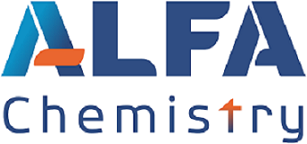| Alfa Chemistry | |
|---|---|
| Country: | United States |
| Tel: | 5166625404 |
| E-mail: | support@alfa-chemistry.com |
| QQ: | |
| Skype: | Chat Now! |
Understanding the Detergents in Your Daily Life
Release time: 2023-05-29
Every day, we come into contact with a wide variety of detergents commonly used in households, including fabric cleaners, kitchen cleaners, and personal hygiene cleaners. Understanding the different types of detergents and their applications can help us make informed decisions about how we clean and maintain our homes.
Fabric Detergents
The dirt that accumulates on our clothes and linens can be a combination of grease, protein, dust, and pigment. Conventional washing powders and laundry detergents use surfactants, mechanical force, and other methods to emulsify and disperse grease, dust, and some protein-based dirt. Commonly used laundry soaps, laundry powders, and laundry detergents all serve this purpose.
Laundry soap is a mild and less irritating option for washing delicate items like underwear and baby clothes. Its main component is fatty acid sodium, which has weak alkalinity. However, its detergency decreases in hard water with high metal ion content, and clothes may become stiff after washing. Baby items can be boiled or washed with laundry soap at a higher temperature for a thorough clean.
Washing powder is a strong detergent and the primary product for laundry. Its main components are surfactants, auxiliary agents, and other additives. Adding sodium tripolyphosphate creates phosphorous washing powder, which has excellent washing properties but contributes to water system eutrophication. Phosphorus-free laundry detergent includes zeolite auxiliary agents, which are environmentally safe but less effective than sodium tripolyphosphate. Aerobic washing powder contains oxygen-containing bleaching agents to whiten and brighten clothes. Enzyme laundry detergent has lipase and protease to hydrolyze stubborn dirt on collars and cuffs. Hand-washing detergent is relatively low in alkalinity.
Laundry liquids contain primarily surfactants and few additives. While they have better hard water resistance than soap, their detergency is not as effective as washing powders.
Dishwashing Detergents
Commonly used dishwashing detergents include dishwashing liquids and range hood cleaning agents. For washing tableware, fruits, and vegetables, it is recommended to use dishwashing liquid. Adding disinfectant creates a disinfectant dish soap. Range hood cleaners are highly alkaline and may contain organic solvents for effectively cleaning range hoods, stoves, and hard surfaces like ventilation fans, floor tiles, porcelain, and metal. However, they should not be used for cleaning items other than hard surfaces, and direct contact with skin should be avoided.
Personal hygiene products include shampoo, hair care products, shower gel, facial cleanser, hand sanitizer, and oral cleanser. Shampoo is a widely used hair and scalp cleaning product that contains surfactants and conditioning agents. It is available in a pearlescent or transparent form and can be customized by adding various ingredients to achieve different functions, such as anti-dandruff or nourishing properties. Hair conditioners and balms can help moisture and smooth dry hair after washing. Shower gel is formulated with mild and low-irritating surfactants and skin conditioners, making it different from traditional soap. It is weakly acidic or neutral and close to the pH of the skin, contributing to smooth and comfortable wash care two-in-one effect. It is best to apply the shower gel on a towel or bath cloth and rub it to produce foam before washing the body. Choosing the right product that suits one's hair and skin type is crucial for effective cleansing and care.
Personal Hygiene Products
Personal hygiene products have various types, such as facial cleansers, hand sanitizers, and oral cleaners.
Facial cleansers are used to remove facial blemishes, oil stains and cosmetics, etc. It contains mild surfactants, emollient conditioning agents, more skin care agents, and nutrients than shower gels. It has a weakly acidic pH that cleanses, cares and nourishes the skin. Scrub facial cleansers with polymer particles can exfoliate dead skin cells on the surface through friction and cleansing, while acne facial cleansers with salicylic acid and mint can clean pores, inhibit excess oil secretion, prevent acne, and soothe pimples' redness and stinging. Choosing the facial cleanser that suits one's skin type is crucial for effective cleansing and care.
Hand sanitizers are commonly used because they are less alkaline, weakly acidic, less irritating, and more comfortable to use after washing. The main components of hand sanitizers are surfactants and skin care conditioners. Some also contain the disinfectant bactericide triclosan, which has sterilization and disinfection functions. Water-free hand sanitizers with jelly-like texture are suitable for use when water is inconvenient. They can clean and disinfect hands without washing.
Oral cleaners include toothpaste and mouthwash. Toothpaste contains humectants, abrasives, foaming agents, and other ingredients that are different from those used in children's products. Toothpaste has many functions, such as desensitization, fluoride treatment, and smoke removal. Mouthwash contains bactericides, astringents, and other ingredients that can clean harmful bacteria, tartar, calculus, and food residues on the oral mucosa and teeth. To ensure better oral hygiene, one should choose the oral cleaner that suits their individual needs.
Alfa Chemistry offers a wide range of high-quality detergent products for industrial and research applications. These products include anionic detergents, cationic detergents, non-ionic detergents, zwitterionic detergents, deuterated detergents, neopentyl-based glycosides, fluorinated detergents, tripod detergents, seleniated detergents, and detergents kits, each with different properties and compositions. They also offer custom synthesis of detergents to cater to specific requirements. Alfa Chemistry's detergents are used in various industries, including biotechnology, pharmaceuticals, and environmental science.

